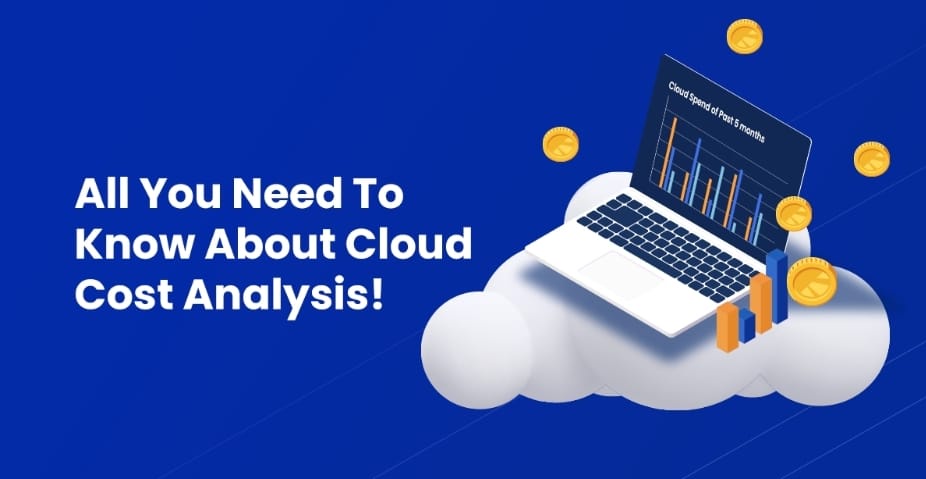Cloud computing allows companies to store and process data on remote servers rather than on-premises, which saves money and increases efficiency. However, as with any technology, there are costs associated with using cloud computing, which can quickly add up. That’s where cloud cost analysis comes in.
Cloud cost analysis is analyzing the costs associated with using cloud computing services. It involves identifying which services are being used, how much they are being used, and how much they cost. By understanding the costs associated with cloud services, businesses can optimize their usage, save money, and avoid unexpected expenses.
Why is Cloud Cost Analysis Important?
Cloud computing services are billed based on usage. This means that the more a service is used, the more it will cost. Without cloud cost analysis, businesses may be using services they don't need inefficiently or not taking advantage of cost-saving opportunities. By analyzing the costs associated with cloud services, businesses can identify opportunities to optimize their usage, reduce costs, and avoid unexpected expenses.
Cloud cost analysis is also essential because it allows businesses to forecast their cloud computing costs accurately. By analyzing usage patterns and trends, businesses can estimate how much they will spend on cloud computing services in the future. This allows businesses to plan their budgets more accurately and avoid unexpected expenses.
What are the benefits of Cloud cost analysis?
Cloud cost analysis can provide a number of benefits for businesses and organizations that use cloud computing services. Some of the main benefits include:
- Cost optimization: Cloud cost analysis can help businesses optimize their cloud spending and reduce costs by identifying inefficiencies and unused resources.
- Increased transparency: By analyzing cloud costs, businesses can gain greater transparency into their spending and better understand how their resources are being used.
- Improved budgeting: Cloud cost analysis can help businesses forecast and budget for cloud expenses more accurately, reducing the likelihood of unexpected cost overruns.
- Better decision-making: With access to detailed information on cloud costs, businesses can make more informed decisions about which cloud services to use, when, and how to allocate resources.
- Increased efficiency: Cloud cost analysis can help businesses identify opportunities to automate processes and optimize resource usage, leading to increased efficiency and productivity.
- Enhanced security: By analyzing cloud costs, businesses can identify security risks and improve their security posture, such as identifying and addressing vulnerabilities or implementing access controls.
Overall, cloud cost analysis is a powerful tool for businesses looking to optimize their cloud spending, increase transparency and efficiency, and make more informed decisions about their cloud resources.
How to Implement Cloud Cost Analysis?
Performing cloud cost analysis requires a structured approach. Here are the steps you should follow:
- Identify the Services Being Used
The first step in cloud cost analysis is identifying the cloud services used. This includes identifying which services are used, how much they are used, and who is using them. This information can be obtained from the cloud service provider's billing dashboard.
- Analyze Usage Patterns
Once the services being used have been identified, the next step is to analyze usage patterns. This involves looking at how much each service is being used over time. This information can be obtained from the cloud service provider's usage dashboard.
- Identify Cost Drivers
After analyzing usage patterns, the next step is identifying the cost drivers. Cost drivers are the factors driving up the cost of cloud services. This may include services that are being used inefficiently, services that are not being used but are still being billed, or services that are being used more than necessary.
- Optimize Usage
Once the cost drivers have been identified, optimizing usage is next. This involves reducing the usage of services that are driving up costs. This may include adjusting service usage patterns, reducing the number of users, or switching to a cheaper service.
- Monitor and Repeat
Cloud cost analysis is an ongoing process. Once the above steps have been completed, it is essential to continue monitoring usage patterns and identifying cost drivers. By regularly analyzing cloud costs and making adjustments, businesses can continue to optimize their cloud usage and reduce costs.
Conclusion
Cloud cost analysis is essential for any business that uses cloud computing services. Businesses can optimize their usage, reduce costs, and avoid unexpected expenses by analyzing cloud costs. The key to successful cloud cost analysis is to follow a structured approach, including identifying the services being used, analyzing usage patterns, identifying cost drivers, optimizing usage, and monitoring and repeating the process. Fortunately, a variety of tools available can automate much of the process, making cloud cost analysis more efficient and effective.


No comments yet